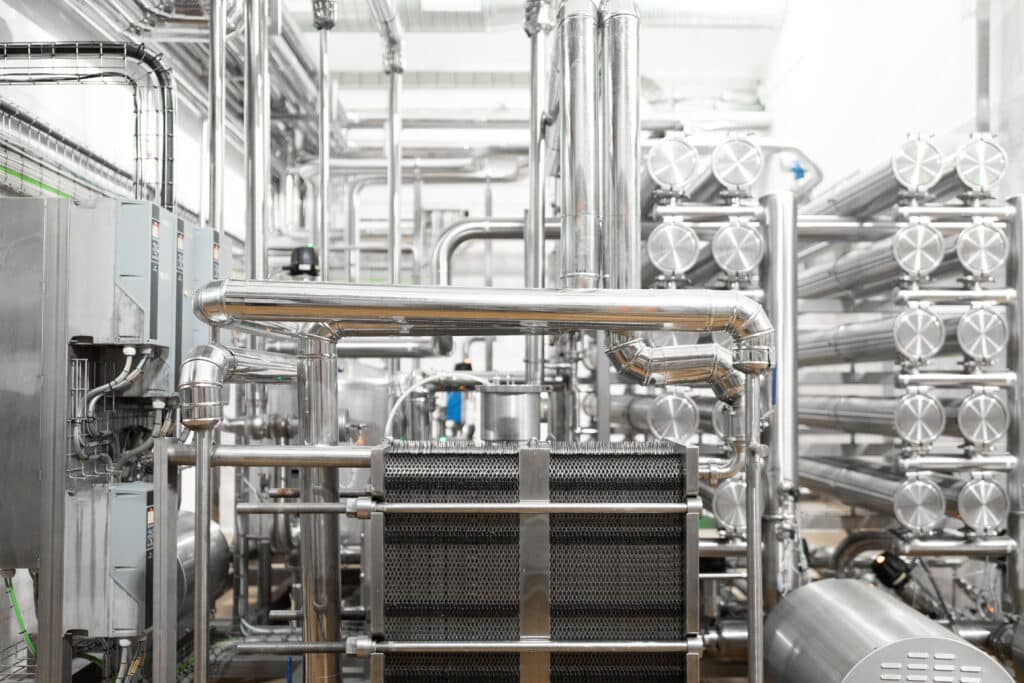Uncategorized
Understanding Pressure Drop and Its Impact on Your Processing System
In the world of industrial processes and systems, ensuring the smooth and efficient flow of fluids is of paramount importance. An often-overlooked aspect that can significantly affect the performance of processing systems is pressure drop.
In this comprehensive guide, we’ll delve into what pressure drop is, the factors contributing to it, and its consequences on processing systems. Moreover, we’ll shed light on the vital role that chillers, like those offered by KKT Chillers, play in managing pressure drop and maintaining optimal system performance.
What Is Pressure Drop?
Pressure drop is a term used to describe the decrease in fluid pressure as it moves through pipelines, ducts, or a system. This phenomenon occurs due to various factors, and understanding and managing it are essential for ensuring the reliable operation of industrial processes.
Although pressure drop isn’t innately bad and can be taken account for in a system’s design, there are negative consequences associated with it if it hasn’t been accounted for in a particular installation. Ultimately, being aware of pressure drop and its implications can be a game-changer for your systems.
The Factors Contributing to Pressure Drop
Let’s take a closer look at the contributing factors and challenges related to pressure drop:
- Friction from Pipe Walls: As fluids flow through pipes, friction with the pipe’s inner walls is a primary cause of pressure drop. The rougher the interior surface of the pipe, the greater the friction, resulting in more significant pressure loss.
- Sudden Expansion or Contraction: Sudden changes in pipe diameter, such as expansions or contractions, can lead to abrupt shifts in fluid velocity. These changes cause pressure variations, which can disrupt the uniform flow of fluids.
- Leaks in the Pipe Walls: Any leaks in the pipe or system can result in fluid escaping, leading to a drop in pressure within the system.
Common Challenges Related to Pressure Drop
Understanding the challenges associated with pressure drop is essential as it directly impacts the equipment they supply. Here are some of the common challenges:
- Reduced Efficiency: Excessive pressure drop can lead to reduced efficiency in the processing system. This results in slower production and potentially a lower-quality end product.
- Increased Energy Costs: To compensate for pressure drop, additional energy may be required to maintain the desired flow rates. This leads to higher operational costs for industries.
- Equipment Wear and Tear: Components, valves, and pipes within the processing system can suffer from increased friction and wear when pressure drop is not managed correctly. This can result in maintenance issues and costly repairs.
The Role of Chillers in Managing Pressure Drop
Now, let’s explore how chillers, like those offered by KKT Chillers, can play a pivotal role in managing and mitigating pressure drop within industrial processing systems:
Temperature Control
Chillers are designed to maintain stable temperatures within processing systems, and this is crucial for preventing temperature-related variations that can lead to pressure drop. By efficiently cooling fluids or gasses, chillers reduce the likelihood of thermal expansion and contraction, which can exacerbate pressure drop issues.
Overheating Prevention
Chillers also play an important role in preventing overheating of components, valves, and pipes. Overheating can lead to increased friction and pressure drop. The precise temperature control offered by chillers ensures that these components operate within safe temperature ranges, reducing the risk of wear and tear.
Methods to Minimize Pressure Drop
For those focused on delivering efficient solutions to their clients, it’s vital to be aware of how to minimize pressure drop. Here are some methods that can help in this regard:
- Proper Piping Design: Ensure that the system’s piping design is optimized to minimize pressure drop. This includes selecting appropriate pipe materials, reducing sharp bends, and utilizing smooth inner surfaces to minimize friction.
- Regular System Maintenance: Encourage industries to conduct regular maintenance to detect and rectify potential issues that may lead to pressure drop. This includes identifying and fixing leaks and monitoring the condition of components and pipes.
- Using Advanced Chillers like KKT: Advise clients to invest in advanced chillers like those from KKT Chillers, which are designed to provide precise temperature control and minimize the risk of pressure drop. Such chillers offer energy-efficient solutions that help maintain stable processing conditions.
Keep Your Processing Systems Running Smoothly With KKT Chillers
Understanding the concept of pressure drop enables you to provide comprehensive solutions that enhance the efficiency and reliability of your processing systems. By recognizing the vital role that chillers, like those offered by KKT Chillers, play in managing pressure drop, you can enjoy state-of-the-art equipment that ensures optimal performance and cost-efficiency.To explore how KKT Chillers can support your processing systems and reduce pressure drop, contact us today. Our team of experts is ready to assist in finding the best chiller solutions for various industrial applications.
